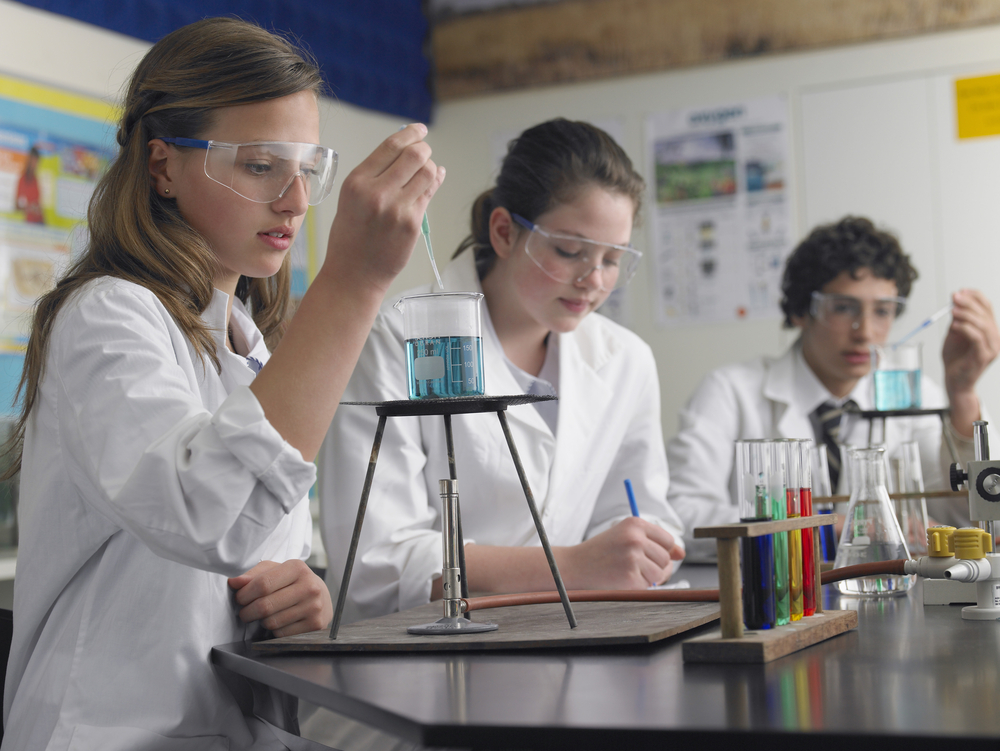We are nearly one year on from when students sat the first round of exam papers for the new science GCSEs (9-1). It has certainly been a steep learning curve for students and teachers alike. Leaders of science are having to respond to the changes in the new science exams by adapting pedagogy, reconsidering curriculum design and criteria to determine tier of entry.
Examiners reports for science showed many similarities in areas of weakness across the examination boards. One area of weakness highlighted by exam boards was performance in questions testing students’ ability to apply knowledge and understanding to unfamiliar contexts (AO2) and analyse information and ideas (AO3). Forty per cent of marks are awarded for AO2 and twenty per cent for AO3, so students need to be able to apply their knowledge and be confident analysing information to access the higher grades.
Schools need to be asking themselves whether they are delivering a science scheme of work that adequately prepares students for all of the assessment objectives. Many schools are traditionally strong on AO1 (demonstrating knowledge and understanding of scientific ideas, scientific techniques and procedures). However, many schemes of work are not well aligned to the new exams and have too much emphasis on AO1, delivering content rather developing the ability to apply knowledge or analyse information. The new science specifications include not only more content, but also an increased level of demand compared to the old specification. Teachers can, therefore, feel pressurised to focus on content at the expense of developing students’ ability to use and apply knowledge. Clearly, students need to gain a firm understanding of scientific ideas to be able to apply and use their knowledge. Speeding through content might mean teachers cover the entire specification, but it could also result in what Amanda Spielman calls a ‘hollowed out and flimsy understanding’ and students that don’t have the deep understanding required to use and apply what they have learnt. The challenge, therefore, is getting the right balance between teaching the content and spending time practising applying and using it. Ultimately, delivering lessons that consistently focus on just learning the scientific knowledge will fall short in preparing students to answer questions that will allow students to access the higher grades.
The move to a linear assessment model is another reason for schools to reconsider their science curriculum design and pedagogy. Terminal exams have resulted in a more poignant need for spiral-style curricula that regularly revisit and build on ideas and develop understanding over time. Many schools have implemented strategies such as retrieval practice and distributed practice to support students in retaining the wealth of knowledge and understanding they need for the terminal exams. The new GCSEs are too big to teach in two years so the majority of schools are starting the GCSE curriculum in year 9, or in some cases earlier. Some schools are moving towards building a 5-year curriculum that gradually develops a solid understanding of the big ideas in science alongside all the other key science skills such as ability to apply, analyse, interpret and evaluate. With careful planning, a 5-year curriculum is also an opportunity to develop an understanding of the working scientifically, required practicals and maths skills that are also assessed in the new science GSCEs.
Another big talking point has been tier of entry for science GCSEs. Results from the summer 18 exams suggests some science departments may need to reconsider their tier of entry policy. The 2018 exams were unique in that special arrangements were made by Ofqual to allow students taking higher tier science exams to get a 3-3 or 3-4 in combined science or grade 3 in the separate sciences. This was put in place to prevent more students getting U grades after taking higher tier science exams. Ofqual has announced it will not be repeating these special arrangements, so schools need to reflect on their entry decisions. The general advice from exams boards and Ofqual is if higher tier students entered for science got 4–3/3 or any got 3–3 last year, schools should be reviewing their entry decisions very carefully, as it’s likely some of those students should have been entered for the foundation tier instead of the higher.
By Heidi Foxford
Heidi is an experienced Science Education Consultant with an expertise in delivering CPD to improve teaching and learning in science as well as writing science education materials. Heidi is based in the South West working for organisations including STEM learning, Babcock Ltd, Pearson and HarperCollins.



